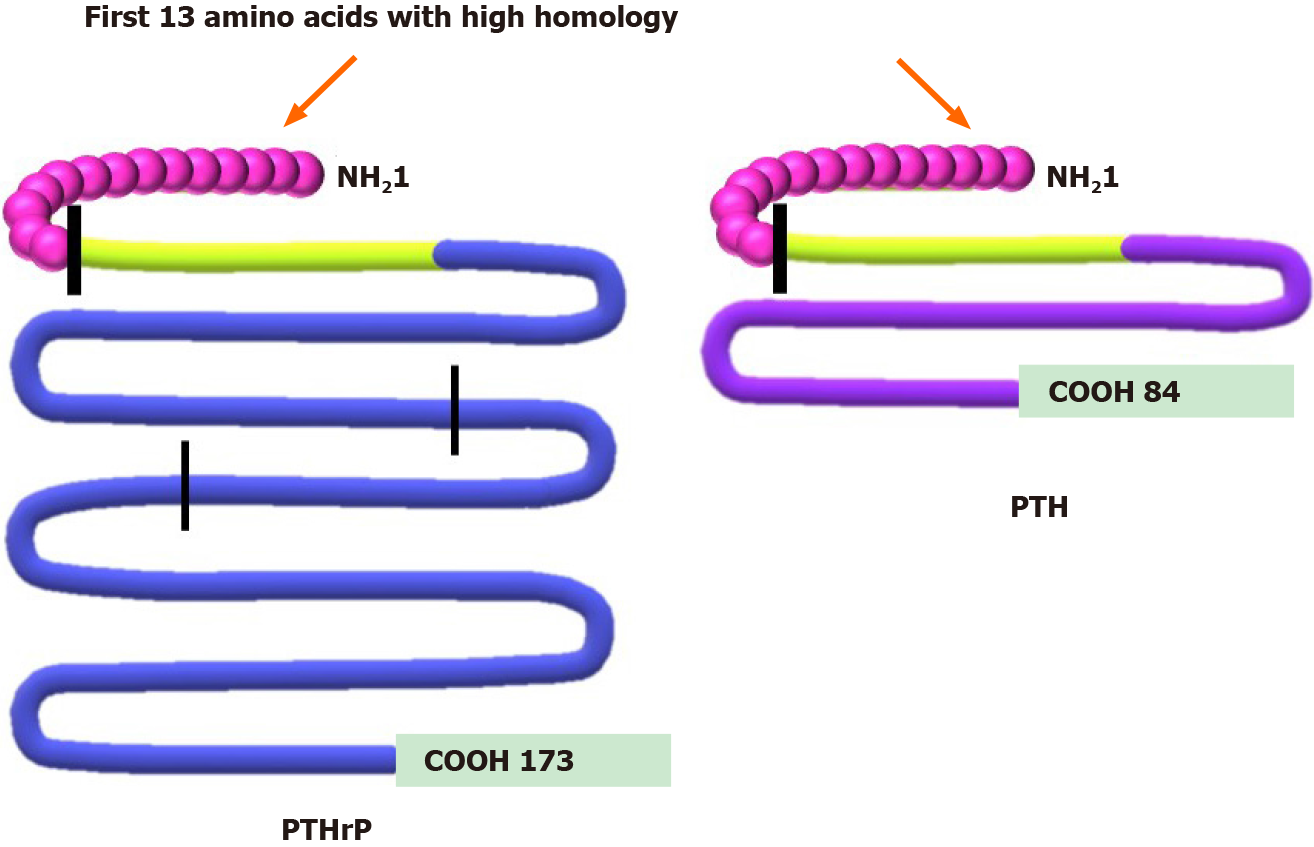Copyright
©The Author(s) 2021.
World J Gastroenterol. Nov 7, 2021; 27(41): 7025-7040
Published online Nov 7, 2021. doi: 10.3748/wjg.v27.i41.7025
Published online Nov 7, 2021. doi: 10.3748/wjg.v27.i41.7025
Figure 1 Comparison between protein structure of parathyroid hormone-related peptide and parathyroid hormone.
Parathyroid hormone-related peptide (PTHrP) peptide (left side) undergoes a complex post-translational process, obtaining several secreted forms. The N-terminal region 1-34 (green) shows high homology with parathyroid hormone (PTH) and shares more than 60% of the first 13 amino acids (first vertical line). This region allows PTHrP to interact with the type 1 PTH receptor. The PTHrP 36-86, region between N-terminal domain and the second vertical line, is related to placental calcium transport. The 87-107 domain contains a nuclear localization signal (domain between the second and third vertical lines), and the remaining COOH region corresponds to the osteostatin domain[20,24,25]. This figure is original for this work and is based on data published in Soki et al[20], Wysolmerski JJ[24] and Goltzman D[25].
- Citation: Novoa Díaz MB, Carriere PM, Martín MJ, Calvo N, Gentili C. Involvement of parathyroid hormone-related peptide in the aggressive phenotype of colorectal cancer cells. World J Gastroenterol 2021; 27(41): 7025-7040
- URL: https://www.wjgnet.com/1007-9327/full/v27/i41/7025.htm
- DOI: https://dx.doi.org/10.3748/wjg.v27.i41.7025









